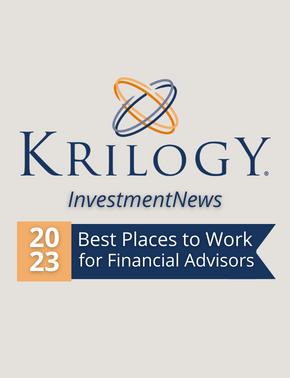Market Comments
After wrapping up an extremely volatile third quarter, in large part due to concerns over slowing growth out of China, we’re generally encouraged as we work our way through earnings season in the U.S in Q4 2015. Specifically, we’re hearing management from U.S. companies discuss the relative strength of the U.S. economy. We’re reminded that North America represents roughly 70% of sales for S&P 500 companies compared to 12% from Europe and 10% from Asia. This reality helps mitigate too much unnecessary focus on a slowing China, which is still anticipated to have GDP growth of 6.8% on a year-over-year basis. If stabilizing data helps support this number or even something close to it, we anticipate alleviation, at least in part, of that concern.
In addition to concerns about a slowing China, the Federal Reserve continues to share center stage as it seeks to normalize monetary conditions after years of Quantitative Easing. The stock market was preparing for the Fed to embark on its first increase in the Fed Funds rate since 2006 in its September meeting, but had grown anxious and uncertain as to why it hadn’t done so, as the data appeared to justify making this first lift-off interest rate move. The Fed is faced with the challenge of normalizing monetary conditions, without derailing the economy and in a world embattled by stagnant global growth, minimal wage growth, and very low inflation, it becomes increasingly challenging. However, optimism and confidence remains, albeit somewhat shaken, that the Fed can embark on a slow, methodical rate tightening process that will result in continued market volatility as we go through this transitory period, but not upend the global economy. To keep it simple, the Fed has a dual mandate of price stability and full employment, yet the September meeting comments made reference to “global economic developments” that had garnered the Fed’s attention and perhaps been the main reason for no increase in rates. This mentioning led to stock market uncertainty and anxiety as “global economic developments” is an ambiguous variable that is hard to measure. It hints that perhaps the Fed has greater concern about what is occurring globally and the ramifications it may have here domestically.
So what does all this talk about China and the Fed mean for the stock market?
Well, we’ve discussed volatility and we’ve sure seen that, as at one point during the rough 3rd Quarter for the U.S. stock market, 117 of the S&P 500 companies were down over 50% from their highs. As the S&P 500 sits at a forward PE (price to earnings) multiple between16 and 17, the market is priced neither expensively or inexpensively, given where interest rates are, yet with eventual Fed tightening, it makes PE multiple expansion a little more difficult. In fact, in recent weeks, there has been a lot of buzz about an “earnings recession,” which is characterized by two consecutive quarters of negative year-over-year earnings growth. This is certainly not a positive development and has not happened since 2009, but has happened in four periods since 1986, all of which were marked by periods where the economy’s growth remained positive and out of recession territory. However, with U.S. Corporate profit margins near 9% after peaking at 10% in 2014, it’s difficult to envision expansion from these levels, as they are near cyclically high levels. As long as we don’t see significant decline in these margins, we have a number of positives to be cognizant of, including an upward sloping U.S. Treasury Yield curve, which suggests favorable credit conditions, much lower energy prices, which should help consumption, and good strength in housing, construction, and auto manufacturing sales, which don’t signal recession or bear market conditions. In fact, according to Bloomberg Surveys, in early October, year-ahead recession probability estimates had risen for the first time in 14 months, but only stand at less than 15%.
How all of this information translates into what Krilogy is accomplishing for you:
The volatility amidst most segments of the equity and fixed income markets in the 3rd Quarter of 2015, brings out the value in one of our most important portfolio management service offerings. The pro-active stress-testing that we implement on all of our investment portfolios for a litany of global macro concerns, including a severely slowing global economy, a deflationary environment, a continued energy price collapse, and an all-out stock market collapse, helps provide a forward looking layer of due diligence. This process helps give us confirmation in our portfolio positioning at the macro level, as well as the individual position level. Ensuring proper allocation and un-biased investment implementation for each client’s appropriate level of risk is the key driver in this process. The recent volatility also underscores the value in a disciplined process for taking gains in appreciated positions and adding to those which are undervalued and appear attractive on a going forward basis, which is the essence of our Dynamic Rebalancing process. This process is happening in client portfolios continuously, as needed, throughout the course of the year.
Through our ongoing due diligence calls with portfolio managers, we’re hearing that equity risk budgets in the hedge fund universe collectively, are at levels not seen since the volatile summer of 2011. While this is a general barometer, it’s worth noting, as hedge funds and institutions typically lead, as opposed to follow. This thought process aligns with our generally defensive posturing and while we do believe we’re still in the latter stages of this cycle, it appears there is room left to run, but that different market segments can be poised to take leadership, within equity, fixed income, and alternative investments. Krilogy’s ongoing process for managing risk throughout the cycle helps clients maintain broad diversification as investment leadership changes, downside portfolio protection, discipline around taking gains while adding to undervalued investments, and overall lower investment correlation, which helps smooth out returns and dampens volatility over time. This is all relevant; as a recession looms at some point and we want to be prepared since our distaste for losing is typically greater than our love for wining when it comes to our investment assets.



























